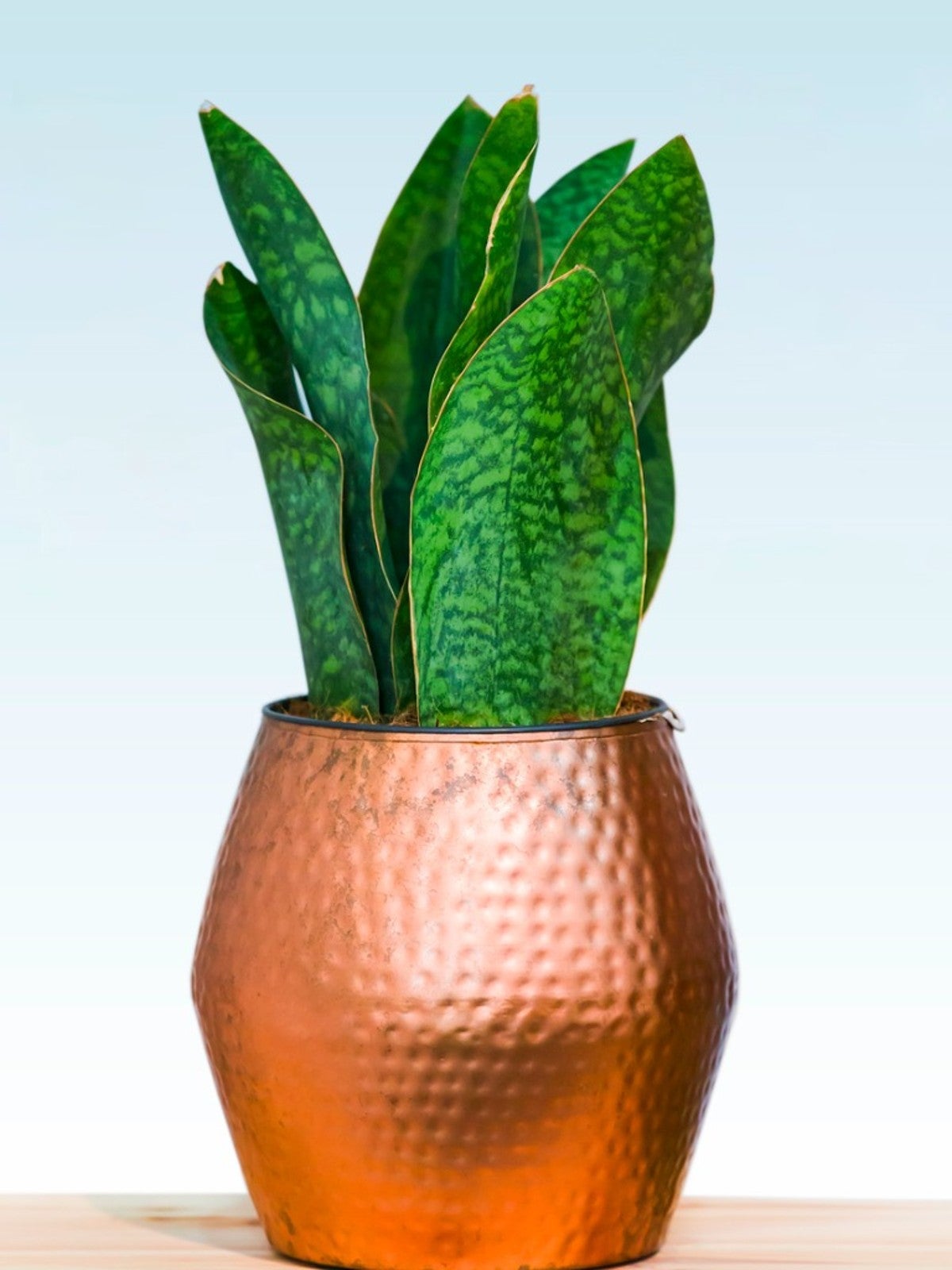Metal Garden Containers - Are Metal Planters Safe


Metal garden containers are an interesting, unique way to complement plants, and unlike ceramic or terracotta, the pots won’t crack, chip, or break. Another mark on the plus side is that some types of metals develop a lovely patina with age.
On the other hand, there are a few problems to be aware of before you fill your metal planter containers with plants. Fortunately, most of the problems are easily resolved without too much trouble. Read on for metal planter DIYs.
Tips On Using Metal Garden Containers: Metal Planter DIY
Heat: Metal garden containers can get hot in a hurry, and the heat can quickly kill your plants. You’ll probably want to keep metal containers in the shade. Lining the container can also help protect the roots.
Metal planter liners: A metal plant liner insulates the roots from heat and cold, but it’s also a good idea for old-fashioned lead containers that can leach toxins into the soil, or anytime you want to isolate the soil from the coating of your metal pot. Bubble wrap and waterproof foam are both effective metal planter liners.
Drainage: Drainage is critical, but metal containers often lack a drainage hole. Be sure to drill a hole in the bottom of the pot, or your plants are likely to rot.
Cachepots are a practical way to get around several problems, including worry about toxins leaching into the soil. Just put an inexpensive plastic or resin pot inside the metal container. The metal container will still need a drainage hole, as the inner pot should never stand in water. You can also remove the inner plant before watering, then let it drain before returning it to the cachepot.
Galvanized Containers are great metal garden containers. They reflect heat, and they’re coated with zinc material that effectively prevents rust. Be careful not to scrape the container, however, because the scraped spots will rust.
Gardening tips, videos, info and more delivered right to your inbox!
Sign up for the Gardening Know How newsletter today and receive a free copy of our e-book "How to Grow Delicious Tomatoes".
You may ask, however, are galvanized metal planters safe? It’s true that zinc leaches into the soil, but zinc is a natural part of soil makeup and is also an essential micronutrient for plants. The leaching occurs so slowly that the zinc should create no problems, but if you’re concerned, you may want to use metal planter liners or plant vegetables in a different container.
Weight: Some metal planter containers, especially cast iron pots, are extremely heavy, so if you want the plant to be moveable, put it on a rolling platform. Keep in mind that a balcony may not be able to support a heavy container.
Rust: Rust can be a problem for non-galvanized metal garden containers, especially if you live in a rainy or humid climate. One way around this problem is to paint the container with nontoxic rust inhibitor or clear enamel. Give it three coats, allowing at least 24 hours to dry between each coat.
Stainless Steel: Pots made of stainless steel aren’t always easy to find, but they’re beautiful and you’ll never have to worry about rust.

A Credentialed Garden Writer, Mary H. Dyer was with Gardening Know How in the very beginning, publishing articles as early as 2007.
-
 Looking For Plants To Give You The Soft And Fuzzies? Try These 5 Fuzzy Leaf Plant Options
Looking For Plants To Give You The Soft And Fuzzies? Try These 5 Fuzzy Leaf Plant OptionsLovers of texture, drama, silver foliage and tactile plants will adore these special sensory garden additions. These fuzzy leaf plant options will leave you all aglow
By Susan Albert
-
 Get Ready For A Summer Of Hummers! Grow These Full Sun Hummingbird Plants and Flowers
Get Ready For A Summer Of Hummers! Grow These Full Sun Hummingbird Plants and FlowersIf you’re lucky enough to enjoy a sunny backyard, make sure you are maxing out on your pollinator opportunities and grow these full sun hummingbird plants and flowers
By Tonya Barnett